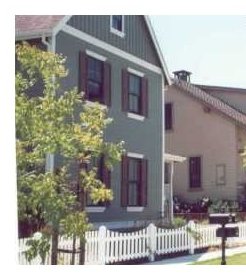

|
| weblog/wEssays archives | home | |
|
Twilight for Exurbia? (August 1, 2006) I recently received an extremely thought-provoking note from a correspondent which I reprint (with permission) in its entirety. 
"If there is a crash in the housing market many people will be forced to sell or will have it done for them by the lenders. One can then expect the price to drop and the demand then to pick up. However home ownership is not without costs - property taxes and maintenance being the most obvious. Will demand pick up to meet the supply? - maybe not. It is a reasonable assumption that if there is massive oversupply then there may well not be buyers for some homes at any price. The source of the oversupply could be in the many empty properties held by speculators, but also in hard economic times people move in with family members to save on costs - all of which conspires to reduce demand.Detroit, of course, was hollowed out by the job losses resulting from the decline of the U.S. auto industry. The city lost a significant percentage of its population in the period from 1970 to 2000. The question posed by this correspondent is: where might oversupply lead to outright abandonment of recently built homes? I would hazard three guesses: exurban areas (far from urban job centers) which lack nearby employment, new towns in areas of declining demographics, and hastily constructed homes in hurricane-prone, high-insurance locales. As an example of scenario #1, we might speculate that new tracts of homes in exurban areas like Modesto, calif., a long (or even extreme) commute away from job centers, might remain empty regardless of price. The reason is that massive overbuilding in such areas far exceeds native population growth; once all the speculators have exited, the thousands of available homes may well exceed the demand created by new residents supported by local jobs. Exurban wages tend to be far lower than in urban centers or suburban business parks, which means that prices for new homes would have to drop appreciably before local wage earners could afford the new homes. Additionally, employment typically drops in recessions, which may well translate into a smaller pool of people willing to endure extreme commutes required to live in exurbia: Commuting Is a Drag (on the Economy) more on extreme commutes In scenario #2, states with declining populations (such as Massachusetts) may find that simple demographics will leave new subdivisions empty: there aren't enough new residents of sufficient income to fill the new homes. In scenario #3, poorly constructed (and thus less desirable) tracts of homes in hurricane-prone parts of Florida may remain vacant once potential residents discover the high cost of insuring such homes. The costs of maintaining and insuring such homes may make ownership financially unattractive. Threse are just speculations, but they are based on some history. The new subdivisions which sprang up in Lancaster, Calif., in the last housing boom of the late 80s remained virtual ghost towns in the early 90s when local aerospace employment shrank. A long commute from Los Angeles was a disincentive to new residents, as was dropping property values. Why buy in exurbia when prices are falling and the commute is soul-crushing? Lancaster recovered only as property values began rising and local employment grew. The proposition that any empty house can be sold or rented may well turn out to be false. Residents need jobs, a viable neighborhood and rising property values in order to stake their claim on distant exurban homes. A dropping price is not an incentive, because it carries the question implicit in all housing busts/recessions: what's to keep the price from falling further after I buy? For more on this subject and a wide array of other topics, please visit my weblog. copyright © 2006 Charles Hugh Smith. All rights reserved in all media. I would be honored if you linked this wEssay to your site, or printed a copy for your own use. |
||
| weblog/wEssays | home |